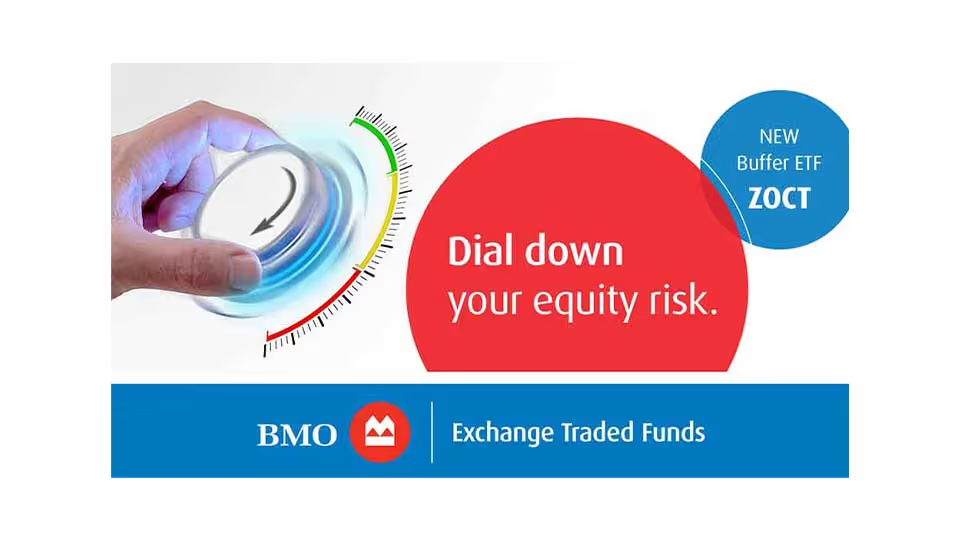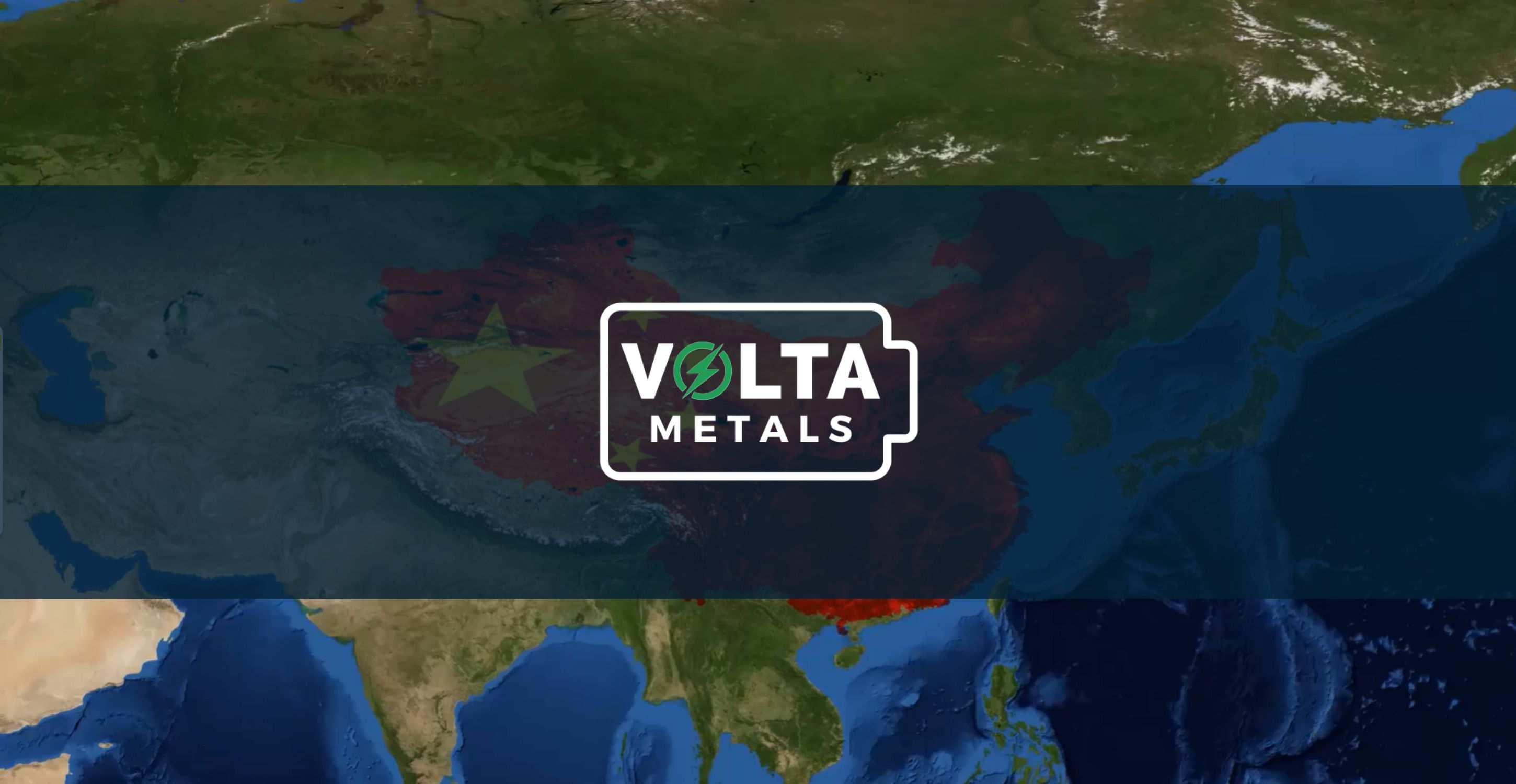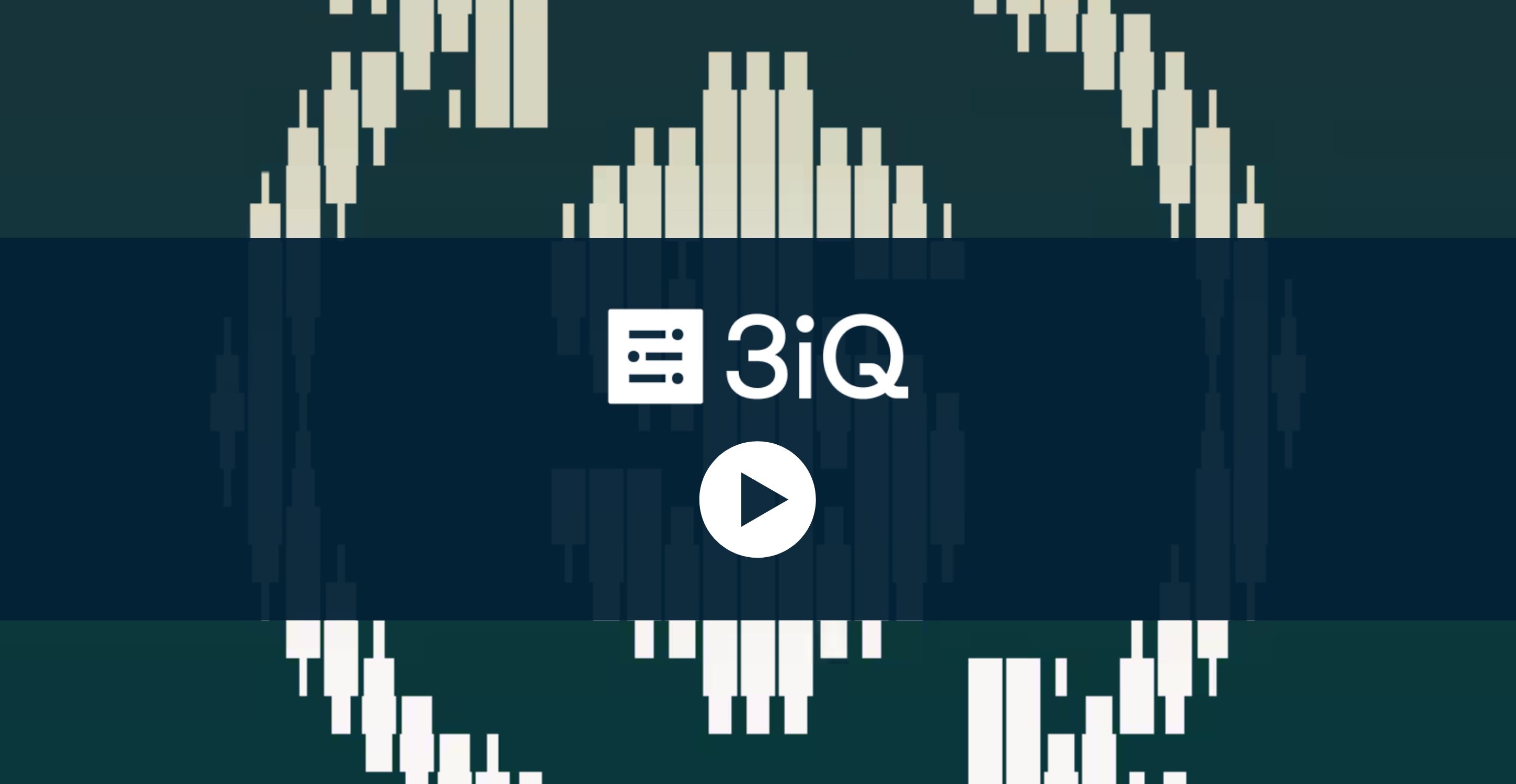BMO Buffer ETF Offers Smoother Ride Through Turbulent Times
Rising interest rates, sky-high inflation, and concerns of a looming market recession are all weighing on investors’ minds. It’s an environment that has left many looking to dial down equity market risk. Many investors want the growth potential that the equity market can provide, but do not want to take on full equity market risk in their portfolios. To reduce the day-to-day volatility that can come from the equity market, investors may want to consider an investment with an explicit level of downside protection.

Rising interest rates, sky-high inflation, and concerns of a looming market recession are all weighing on investors’ minds. It’s an environment that has left many looking to dial down equity market risk. Many investors want the growth potential that the equity market can provide, but do not want to take on full equity market risk in their portfolios. To reduce the day-to-day volatility that can come from the equity market, investors may want to consider an investment with an explicit level of downside protection.
Now, thanks to BMO, there’s an ETF designed to provide investors both potential upside growth to a pre-determined level and an explicit level of downside protection - the BMO US Equity Buffer Hedged to CAD ETF (ZOCT).
As a trade-off for providing that downside protection, the Buffer ETF caps the upside potential that investors can achieve. The “upside cap“ is the maximum potential price return before fees, taxes and expenses. Both the protection level and the upside cap are defined at the start of the period and this creates a transparent structure that gives investors visibility into how their portfolio may perform over the coming period. The downside protection level is called the “buffer zone”. A buffer zone is a predetermined range of drawdown protection of the price return of a reference index (before fees, expenses and taxes).
Both the buffer zone and the upside cap are defined at the start of an outcome period, or term, which is typically a year. Together, they help create a transparent structure that gives investors visibility into how their portfolio might perform over the coming period.
ZOCT is designed to protect capital against market declines that occur within the ETF’s buffer zone, provided assets are held to the end of the outcome period. For instance, if the buffer zone was set at 15% and you bought the fund at the beginning of a new outcome period and held it a full year, the fund would protect you from losses of up to 15%. Similarly, if the market declined by 20%, your loss would be limited to 5%.
Buffer ETFs are constructed using a three-step process. First, the fund invests in the underlying reference asset – in this case, the BMO S&P 500 Hedged to CAD Index ETF (ZUE). Next, the fund buys a customized options package known as a put spread to create the downside buffer. Third, the fund sells an upside call option to pay for the cost of the protective put spread. This is what creates the upside cap on growth potential.
It is important to note that that the buffer zone and cap on market participation is set at the beginning of each outcome period and is not fully realized until the end of the period. At that point, the ETF will reset the protective option overlay for the next outcome period based on market conditions at that time. No action is required by the investor, who can continue to hold the Buffer ETF and enjoy continued equity market participation with an element of downside protection. It’s important to note that the buffered zone and cap on market participation is set at the beginning of the period and only apply at the end of the specified outcome period. Investors trading the ETFs during the period can experience different performance from the stated downside buffers and upside cap.
The BMO ETFs website provides important information about the ETF, including the Target Outcome Period start and end dates, and the cap and buffer zones, as well as information regarding the potential outcomes of the ETF on a daily basis.
Beyond the transparency and peace-of-mind the fund offers, it also can provide a range of additional benefits: it can be bought and sold like other ETFs; it provides instant access to a diverse selection of large cap US equities across a number of sectors; there are no upfront commissions; and it comes with a competitive management fee of 0.65%.
In the quest to build better investment portfolios, one name has constantly stood out: BMO ETFs. The BMO US Equity Buffer Hedged to CAD ETF is just one of many popular products BMO ETFs has developed over the last few years. Today, it is the second largest ETF provider in Canada, with over C$90 billion in assets . And its dominance in the Canadian ETF market continues to grow, with offering number one rankings in new ETF investments for 12 years in a rowa variety of ETF strategies to investors.
In addition to its strong pedigree in ETFs, BMO is also the largest ETF option manager in Canada , which allows it to run newer strategies like BMO Buffer ETFs in a very efficient and risk managed way.
BMO Buffer ETFs can be purchased like other ETFs, either in your online direct investing account, or through your advisor. To learn more, visit https://www.bmogam.com/ca-en/products/structured-outcomes/
An investor that purchases Units of a Structured Outcome ETF other than at startingNAV on the first day of a Target Outcome Period and/or sells Units of aStructured Outcome ETF prior to the end of a Target Outcome Period mayexperience results that are very different from the target outcomes sought bythe Structured Outcome ETF for that Target Outcome Period. Both the cap and,where applicable, the buffer are fixed levels that are calculated in relationto the market price of the applicable Reference ETF and a Structured OutcomeETF’s NAV (as Structured herein) at the start of each Target Outcome Period. Asthe market price of the applicable Reference ETF and the Structured OutcomeETF’s NAV will change over the Target Outcome Period, an investor acquiringUnits of a Structured Outcome ETF after the start of a Target Outcome Periodwill likely have a different return potential than an investor who purchasedUnits of a Structured Outcome ETF at the start of the Target Outcome Period.This is because while the cap and, as applicable, the buffer for the TargetOutcome Period are fixed levels that remain constant throughout the TargetOutcome Period, an investor purchasing Units of a Structured Outcome ETF atmarket value during the Target Outcome Period likely purchase Units of aStructured Outcome ETF at a market price that is different from the StructuredOutcome ETF’s NAV at the start of the Target Outcome Period (i.e., the NAV thatthe cap and, as applicable, the buffer reference). In addition, the marketprice of the applicable Reference ETF is likely to be different from the priceof that Reference ETF at the start of the Target Outcome Period. To achieve theintended target outcomes sought by a Structured Outcome ETF for a TargetOutcome Period, an investor must hold Units of the Structured Outcome ETF forthat entire Target Outcome Period. Commissions, management fees and expensesall may be associated with investments in exchange traded funds. Please readthe ETF Facts or prospectus of the BMO ETFs before investing. Exchange tradedfunds are not guaranteed, their values change frequently and past performancemay not be repeated. For a summary of the risks of an investment in the BMOETFs, please see the specific risks set out in the BMO ETF’s prospectus. BMOETFs trade like stocks, fluctuate in market value and may trade at a discountto their net asset value, which may increase the risk of loss. Distributionsare not guaranteed and are subject to change and/or elimination. BMO ETFs aremanaged by BMO Asset Management Inc., which is an investment fund manager and aportfolio manager, and a separate legal entity from Bank of Montreal.®/™Registered trademarks/trademark of Bank of Montreal, used under licence.This article is for information purposes. The information contained herein isnot, and should not be construed as, investment, tax or legal advice to anyparty. Particular investments and/or trading strategies should be evaluatedrelative to the individual’s investment objectives and professional adviceshould be obtained with respect to any circumstance.
Latest Posts
Hot Companies
You might also like


.png)
.png)


